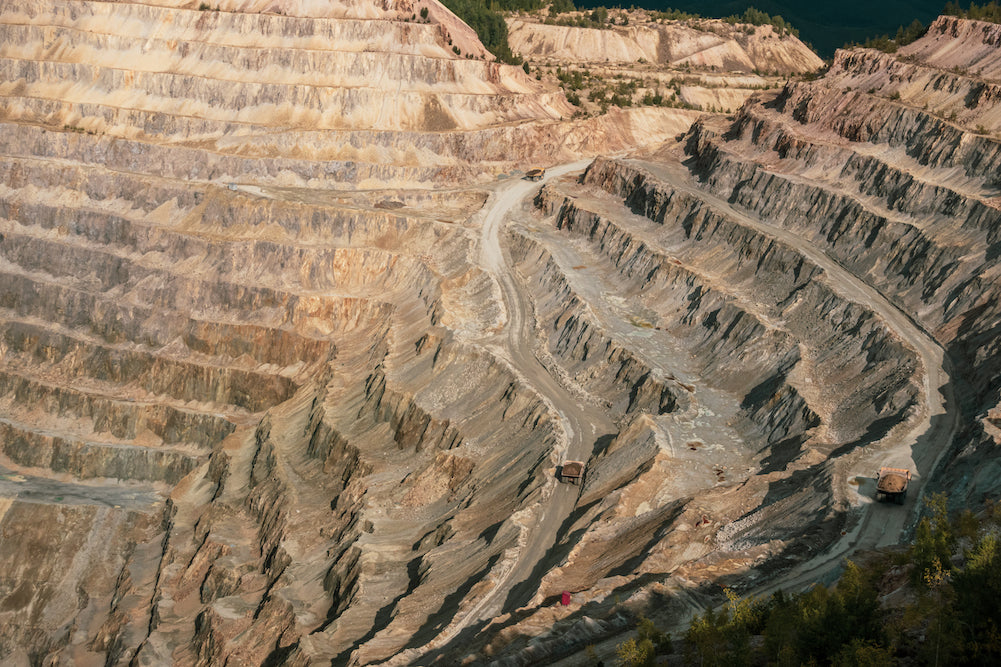
Open Pit Mining: The Environmental Impact and Why it Matters

Introduction
Open pit mining is a method of extracting minerals or other valuable materials from the earth's surface. It involves digging a large hole, known as a pit, in the ground to access the desired resource. While this mining method has its advantages in terms of efficiency and cost-effectiveness, it also has significant environmental impacts that cannot be ignored.
Negative Environmental Impacts
- Land Degradation: One of the major environmental consequences of open pit mining is land degradation. The process of excavating and removing large quantities of soil and rock disrupts the natural landscape, resulting in extensive land disturbances. This can lead to soil erosion, loss of topsoil, and changes in the land's physical and chemical properties. Once the mining operation is completed, the land may be left barren and unable to support vegetation.
- Destruction of Ecosystems and Biodiversity: Open pit mining often involves clearing large areas of vegetation and habitat destruction, which can have severe consequences for local ecosystems and biodiversity. The removal of plants and trees disrupts the natural balance and can lead to the loss of habitats for various species. Additionally, the excavation process can result in the fragmentation of habitats, making it difficult for wildlife to move and causing population decline.
- Air and Water Pollution: Open pit mining operations generate significant amounts of dust and emissions, contributing to air pollution. The extraction and processing of minerals may release harmful substances into the air, such as sulfur dioxide and nitrogen oxides, which can have detrimental effects on human health and the environment. Furthermore, the mining process can contaminate nearby water sources through the discharge of wastewater containing chemicals and heavy metals. This can have serious implications for both aquatic life and the communities that rely on these water sources.
Mitigating the Negative Impacts
- Government Regulations: Governments play a crucial role in mitigating the negative environmental impacts of open pit mining. They can enforce strict regulations and standards to ensure that mining companies adhere to responsible practices. These regulations may include requirements for environmental impact assessments, reclamation plans, and monitoring of air and water quality. By holding mining companies accountable, governments can help minimize the environmental damage caused by open pit mining.
- Technological Advances: Advancements in technology have the potential to reduce the environmental impact of open pit mining. For example, the use of advanced equipment and machinery can help minimize the amount of land disturbance and reduce the emissions generated during the mining process. Furthermore, innovations in waste management and wastewater treatment can help mitigate pollution risks associated with mining operations. Investing in research and development of sustainable mining technologies is crucial for minimizing the environmental impact of open pit mining.
- Sustainable Mining Practices: Adopting sustainable mining practices is another effective way to mitigate the negative impacts of open pit mining. This includes implementing measures to reduce energy consumption, optimizing resource use, and promoting responsible waste management. Companies can also focus on reclamation and rehabilitation efforts to restore the land affected by mining operations. By integrating environmental considerations into their business practices, mining companies can minimize their ecological footprint and contribute to a more sustainable future.
Conclusion
Open pit mining has significant environmental impacts that cannot be overlooked. The destruction of ecosystems, land degradation, and air and water pollution are just a few of the negative consequences associated with this mining method. However, there are ways to mitigate these impacts and promote responsible mining practices.
Companies such as Barrick Gold Corporation have recognized the importance of addressing the environmental impacts of open pit mining. Barrick Gold Corporation is a global mining company that is committed to responsible mining practices. They have implemented various initiatives to reduce their environmental footprint and promote sustainable mining. By investing in innovative technologies and collaborating with local communities, Barrick Gold Corporation aims to minimize the negative impacts of their mining operations.
Resources
If you're interested in learning more about the environmental impact of open pit mining, here are some relevant publications to explore:
- "Environmental Impacts of Mining: A Study of Mining Communities in Ghana" by Samuel Obiri, et al.
- "Environmental Effects of Deep Open Pit Mining" by Slobodan Radosavljevic and Miroslav Radosavljevic.
- "Environmental Impact Assessment of Mining Activities: A New Approach for Mining Companies to Manage Environmental Impacts" by Vladimír Lapčík and Jan Palou.
Additionally, you can find more information about open pit mining and its environmental impact from reputable sources such as government websites, academic journals, and environmental organizations.
Remember, it is important to critically evaluate the sources of information and consider multiple perspectives when researching this topic. Independent research and exploration will provide a comprehensive understanding of the environmental impact of open pit mining and the efforts being made to address it.

